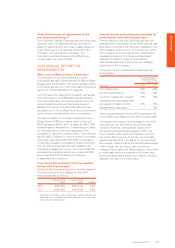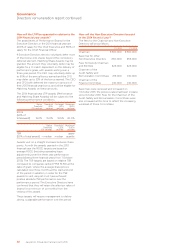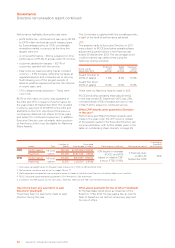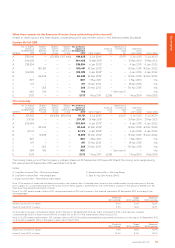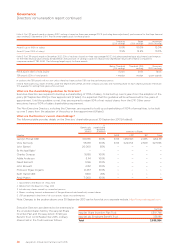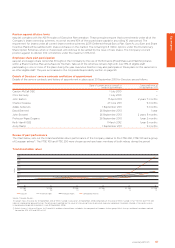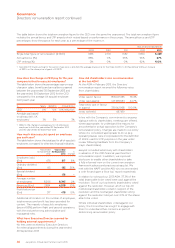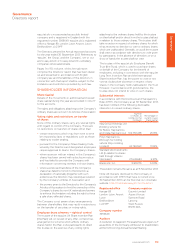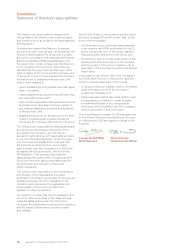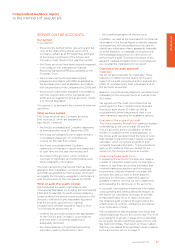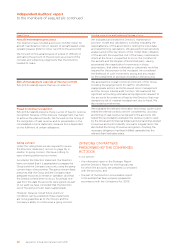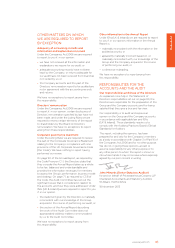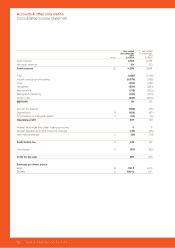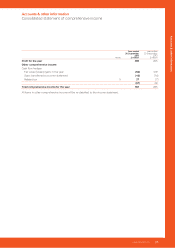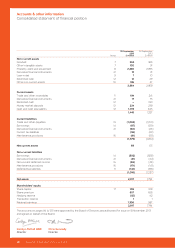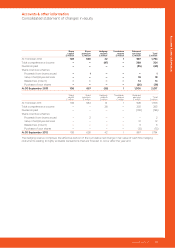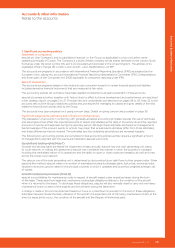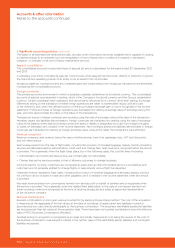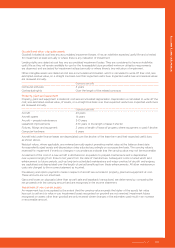EasyJet 2013 Annual Report Download - page 93
Download and view the complete annual report
Please find page 93 of the 2013 EasyJet annual report below. You can navigate through the pages in the report by either clicking on the pages listed below, or by using the keyword search tool below to find specific information within the annual report.
www.easyJet.com 91
Governance
Independent Auditors’ report
to the members of easyJet plc
REPORT ON THE ACCOUNTS
Our opinion
In our opinion:
• the accounts, defined below, give a true and fair
view of the state of the Group’s and of the
Company’s affairs as at 30 September 2013 and
of the Group’s profit and of the Group’s and
Company’s cash flows for the year then ended;
• the Group accounts have been properly prepared
in accordance with International Financial
Reporting Standards (IFRSs) as adopted by the
European Union;
• the Company accounts have been properly
prepared in accordance with IFRSs as adopted by
the European Union and as applied in accordance
with the provisions of the Companies Act 2006; and
• the accounts have been prepared in accordance
with the requirements of the Companies Act
2006 and, as regards the Group accounts, Article
4 of the IAS Regulation.
This opinion is to be read in the context of what we
say below.
What we have audited
The Group accounts and Company accounts
(the “accounts”), which are prepared by
easyJet plc, comprise:
• the Group consolidated and Company statements
of financial position as at 30 September 2013;
• the Group consolidated income statement and
consolidated statement of comprehensive
income for the year then ended;
• the Group consolidated and Company
statements of changes in equity and statements
of cash flows for the year then ended; and
• the notes to the accounts, which include a
summary of significant accounting policies and
other explanatory information.
The financial reporting framework that has been
applied in their preparation comprises applicable law
and IFRSs as adopted by the European Union and,
as regards the Company, as applied in accordance
with the provisions of the Companies Act 2006.
What an audit of accounts involves
We conducted our audit in accordance with
International Standards on Auditing (UK and Ireland)
(‘ISAs (UK & Ireland)’). An audit involves obtaining
evidence about the amounts and disclosures in the
accounts sufficient to give reasonable assurance
that the accounts are free from material
misstatement, whether caused by fraud or error.
This includes an assessment of:
• whether the accounting policies are appropriate
to the Group’s and Company’s circumstances
and have been consistently applied and
adequately disclosed;
• the reasonableness of significant accounting
estimates made by the Directors; and
• the overall presentation of the accounts.
In addition, we read all the financial and non-financial
information in the Annual Report to identify material
inconsistencies with the audited accounts and to
identify any information that is apparently materially
incorrect based on, or materially inconsistent with,
the knowledge acquired by us in the course of
performing the audit. If we become aware of any
apparent material misstatements or inconsistencies
we consider the implications for our report.
Overview of our audit approach
Materiality
We set certain thresholds for materiality. These
helped us to determine the nature, timing and
extent of our audit procedures and to evaluate the
effect of misstatements, both individually and on
the accounts as a whole.
Based on our professional judgement, we determined
materiality for the Group accounts as a whole to be
£23 million.
We agreed with the Audit Committee that we
would report to them misstatements identified
during our audit above £1 million as well as
misstatements below that amount that, in our
view, warranted reporting for qualitative reasons.
Overview of the scope of our audit
The Group operates through four trading subsidiary
undertakings as set out on page 129 and the
Group’s accounts are a consolidation of these
entities. In establishing the overall approach to
the Group audit we determined the type of work
that needed to be performed in respect of each
subsidiary; which comprised an audit of their
complete financial information. These procedures
gave us the evidence that we needed for our
opinion on the Group’s accounts as a whole.
Areas of particular audit focus
In preparing the accounts, the Directors made a
number of subjective judgements, for example in
respect of significant accounting estimates that
involved making assumptions and considering
future events that are inherently uncertain. We
primarily focused our work in these areas by
assessing the Directors’ judgements against
available evidence, forming our own judgements,
and evaluating the disclosures in the accounts.
In our audit, we tested and examined information,
using sampling and other auditing techniques, to
the extent we considered necessary to provide
a reasonable basis for us to draw conclusions.
We obtained audit evidence through testing the
effectiveness of controls, substantive procedures
or a combination of both.
We considered the following areas to be those that
required particular focus in the current year. This is not
a complete list of all risks or areas of focus identified
by our audit. We discussed these areas of focus with
the Audit Committee. Their report on those matters
that they considered to be significant issues in relation
to the accounts is set out on page 71.


